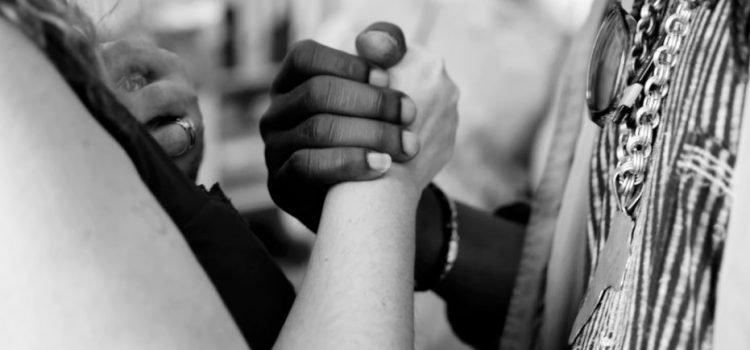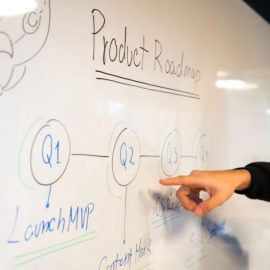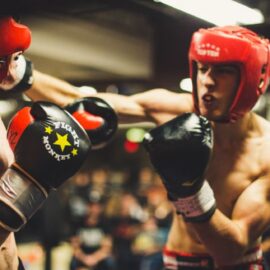

This article is an excerpt from the Shortform book guide to "Biased" by Jennifer L. Eberhardt. Shortform has the world's best summaries and analyses of books you should be reading.
Like this article? Sign up for a free trial here .
Want to know how to reduce bias in the workplace? How can employers commit to antiracism?
In her book Biased, Jennifer Eberhardt suggests four methods for reducing bias at work. Those methods are understanding what triggers bias, using monitoring technology, building interracial relationships, and working to create a new normal.
Learn about the four methods to reduce bias below.
Four Ways to Reduce Bias at Work
Want to know how to reduce bias beyond using structured bias training? There are several ways for individuals and organizations to combat racial bias in the workplace:
1) Understanding the Conditions That Trigger Bias
Bias is difficult to control partly because it’s a conditional state. Most people don’t act in biased ways all the time or in all situations, but the right combination of factors can activate dormant biases in even the most open-minded person.
According to Eberhardt, the author of Biased, the two biggest factors that trigger bias are speed and ambiguity. In this case, “speed” refers to how quickly we make decisions in a certain situation—for example, when hiring managers review resumes, the sheer volume of applications often forces them to decide a candidate’s fate after looking at their resume for just six seconds. “Ambiguity” comes into play when those decisions are based on subjective impressions rather than concrete criteria. In the resume review example, deciding which candidates to interview based on the hiring manager’s gut feeling invites ambiguity; to avoid bias, she should instead commit to interview everyone who meets a predetermined set of criteria (such as having a degree in a relevant field and having three years of experience).
Slowing down the decision process can significantly reduce instances of bias. When police officers interact with citizens, slowing things down has a powerful and potentially life-saving effect. For example, the Oakland Police Department has a foot pursuit policy that prohibits officers from following suspects into backyards or blind alleys during foot chases—instead, they should stop and call for backup.
That small pause deescalates the situation and prevents officers from having to make life-or-death decisions in the heat of the moment. This policy change keeps officers and citizens safer: In Oakland, officer injuries fell by 70%, and police shootings dropped from about eight per year to one or two per year.
(Shortform note: The Las Vegas Metropolitan Police Department enacted a similar rule in 2011, with a small difference: Officers are allowed to chase suspects on foot, but the pursuing officer should not be the first person to put their hands on the suspect. This allows officers to keep the suspect in sight but reduces the risk of making adrenaline-fueled, racially-biased decisions with disastrous consequences. The change helped: The department saw a 23% decrease in total use of force.)
2) Using Monitoring Technology
When structural conditions contribute to bias, changing those structures can eliminate bias. An example of such a change is implementing monitoring technology like police body cameras. Studies show that wearing body cameras has a powerful effect on police officer behavior: When officers know they’re being recorded, they’re more motivated to consciously control their racial biases and treat people fairly. For instance, after the Oakland Police Department implemented body cameras, instances of officers using force dropped sharply as the cameras held officers accountable. Citizen complaints declined, too, both as a result of the decreased use of force and because Oakland residents know they now have objective records of their encounters with police officers.
| Body Cameras Aren’t a Magic Cure In the wake of high-profile instances of police brutality, activists called for more police departments to adopt body cameras as a way to prevent officers from breaking the rules. Like in Oakland, many departments saw some initial positive effect of the cameras—however, more and more evidence shows that body cameras alone have very little effect on police use of force. However, that doesn’t mean body cameras aren’t important. According to two criminal justice scholars writing for the National Police Foundation, body cameras do work—not as a “disinfectant” that prevents use of force in the first place, but as a “flashlight” that illuminates the situation after the fact. These writers argue that body cameras can’t actually prevent police brutality in the long term because officers respond to charged situations with instinct, not conscious thought, so they don’t have time to think about how they’re being recorded and change their behavior in response. However, body cameras are still an important piece of the police reform puzzle because they provide an objective witness to incidents of police brutality, which can bolster the victim’s account of what happened. |
3) Building Personal Relationships That Override Biases
Strong interracial relationships that develop under the right conditions can be powerful bias-busters. Therefore, employers should provide opportunities for their employees to develop genuine, mutually respectful relationships with coworkers of other races. (Shortform note: One study found that having a black coworker significantly reduced racial bias for white employees. Importantly, the researchers in this study bypassed the causation question of earlier studies on contact theory by assigning a “propensity score” to each white worker in a large national sample. Workers with high propensity scores are more likely to want to work with people of color, regardless of whether they already do. Then, the researchers matched each white person in the sample who had black colleagues to a white person with the same propensity score who did not have black colleagues and compared their levels of racial bias.)
4) Creating a New Normal (Despite the Growing Pains)
Businesses today are working hard to catch up to new, more inclusive social norms; however, bias is a complicated topic, and there is a steep learning curve for companies hoping to address it. For example, three years before the bogus arrests in Philadelphia, Starbucks attempted to spark a national conversation about race by having baristas write “Race Together” on customers’ drink cups. The “Race Together” campaign lasted barely a week before the company called it due to backlash from customers who felt it was a superficial gesture. (Shortform note: Criticism of the campaign was so widespread that it inspired a Saturday Night Live parody.)
While the campaign was short-lived, the lessons of that early failure informed the company’s bold response to “the Starbucks incident” years later. In other words, Starbucks’s willingness to engage with a difficult topic—even clumsily—played a huge role in creating a new norm for addressing racial bias in business.
| Is CEO Activism Part of the “New Normal”? Beyond bias training and firing employees who make racist comments, how can employers commit to antiracism? “CEO activism” is one method, in which prominent CEOs publicly take a stand on social and environmental issues like racism, gender equality, or climate change. Starbucks’s “Race Together” was an example of CEO activism—the initiative was the brainchild of CEO Howard Schultz, who rolled out the campaign against the warnings of his executive team and without doing any market research. The “Race Together” pushback illustrates why many people feel that corporate executives should keep their personal beliefs out of business, especially since taking a stand on controversial topics risks alienating customers or employees and ultimately losing money. Regardless of the risks, CEO activism is a growing trend that’s unlikely to fade, especially as the socially conscious Millennial generation takes over. And CEOs are even more powerful when they band together, which is why PwC Chairman Tim Ryan founded “CEO Action for Diversity and Inclusion,” an antiracist business commitment with nearly 2,000 signatories, all of whom are presidents or CEOs. |

———End of Preview———
Like what you just read? Read the rest of the world's best book summary and analysis of Jennifer L. Eberhardt's "Biased" at Shortform .
Here's what you'll find in our full Biased summary :
- How implicit bias forms in the brain
- Whether or not bias training actually works
- Why there has been a sudden resurgence in white nationalism






